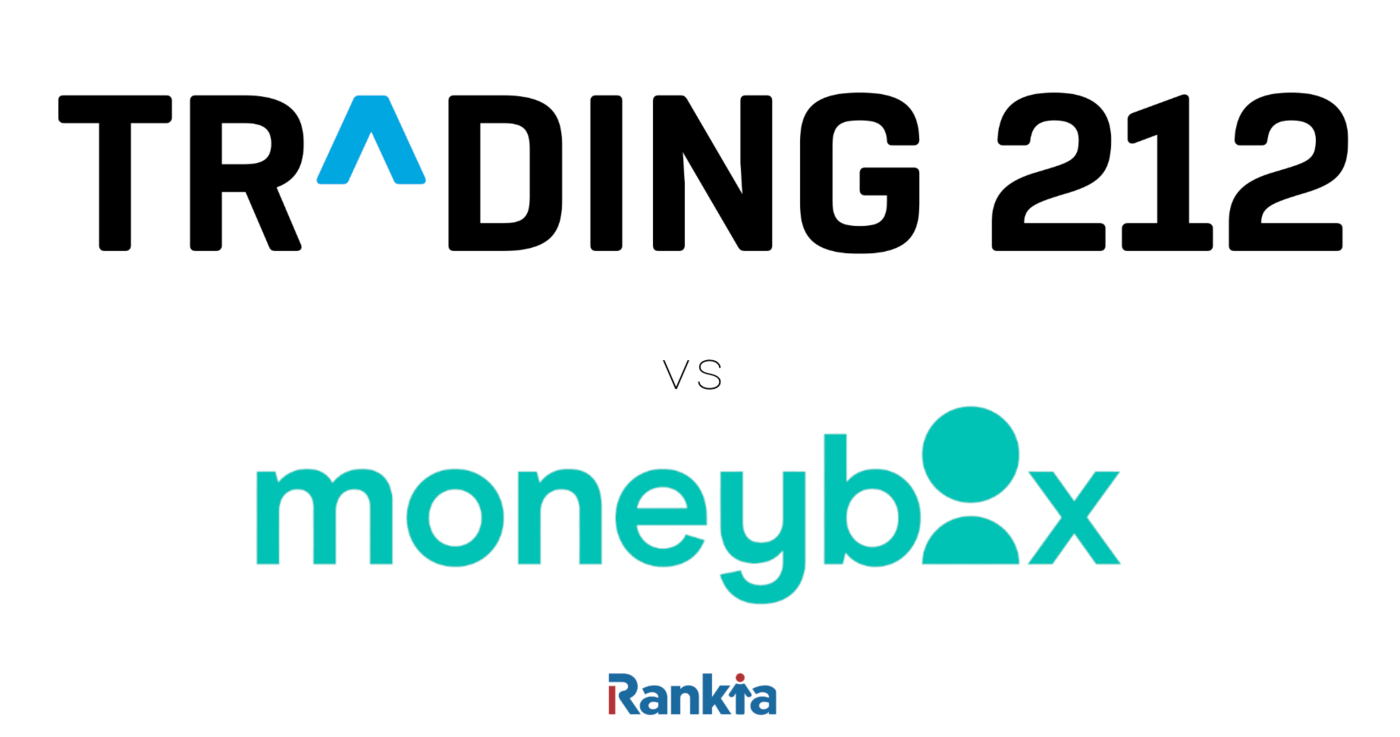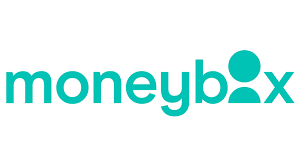Comparatives
Moneybox vs Trading 212: Comparison

Moneybox is ideal for hands-off savers focused on long-term goals like ISAs and pensions. Trading 212 suits active investors seeking commission-free trading and wider market access. Your choice depends on whether you prefer simplicity and automation or flexibility and control.
If you’re in the UK and ready to make your money work harder in 2025, chances are you’ve come across Moneybox and Trading 212. Both are major players in the app-based investing space, but they go about things very differently.
Whether you're here for a solid Cash ISA, thinking about dipping into a Stocks and Shares ISA, or just want the most bang for your buck without the stress, this breakdown is made for you.
We’ll compare both platforms side-by-side, from fees to features, user experience to trust, and help you work out which one actually fits your style.


Key Features
Get a feel for what each app offers and what sets them apart from the start.
| Feature | Moneybox | Trading 212 | |||
| Founded | 2015 | 2013 | |||
| Regulation | FCA-regulated; FSCS protection | FCA-regulated; FSCS protection | |||
| Fees | Platform + fund fees | No platform or trading fees (only spreads) | |||
| Platform Type | Passive investing + saving tools | DIY investing | |||
| Investment Options | Managed ETFs, Cash ISA, Lifetime ISA | Stocks, ETFs, fractional shares | |||
| Minimum Deposit | £1 | £1 |
| Feature | Moneybox | Trading 212 |
| Founded | 2015 | 2013 |
| Regulation | FCA-regulated; FSCS protection | FCA-regulated; FSCS protection |
| Fees | Platform + fund fees | No platform or trading fees (only spreads) |
| Platform Type | Passive investing + saving tools | DIY investing |
| Investment Options | Managed ETFs, Cash ISA, Lifetime ISA | Stocks, ETFs, fractional shares |
| Minimum Deposit | £1 | £1 |
From the start, it’s clear these platforms aren’t cut from the same cloth. Moneybox aims to make investing feel like saving, with automated features and tidy portfolios. Trading 212 is more like a digital trading desk in your pocket, built for zero-fee investing and full control.
For more information, read our detailed Moneybox review.
Safety
Moneybox is a UK-based investment platform that allows users to save and invest in ISAs, pensions, and general investment accounts. It is regulated by the Financial Conduct Authority (FCA), which ensures that it adheres to strict financial standards and consumer protection laws. Moneybox offers clients protection through the Financial Services Compensation Scheme (FSCS), which covers up to £85,000 in case of provider failure. However, like any investment, there is no guarantee of returns, and users should be aware of the risks associated with investing in the stock market.
Trading 212 is also a regulated investment platform, licensed by the FCA, and offers commission-free trading on stocks, ETFs, and other financial instruments. It is designed to be secure, employing encryption protocols and offering two-factor authentication to protect user accounts. As an FCA-regulated entity, Trading 212 adheres to stringent financial regulations. Additionally, clients' funds are held in segregated accounts, providing extra security. However, trading involves inherent risks, and while protection mechanisms are in place, investors should be mindful of market volatility and potential losses.
Fees & charges
When it comes to fees, this is where the rubber really hits the road. And the gap between Moneybox and Trading 212 is hard to miss.
With Moneybox, you’re getting a set-it-and-forget-it kind of vibe, and you’ll pay for that convenience. They charge a monthly fee of £1 after the first three months, a 0.45% platform fee, plus an average fund fee around 0.17%, and a small spread baked into market prices.
Trading 212, by contrast, takes the minimalist route: no platform fees, no commission, no nonsense. You only really pay via the spread and FX fee if you invest in non-GBP stocks. Over time, that can save you hundreds, if you're comfortable navigating your own investment choices.
So, in the Moneybox stocks and shares ISA vs Trading 212 debate, it’s really a question of whether you value guidance or raw cost-efficiency. Trading 212 gives you tools. Moneybox gives you a co-pilot.
For more information, read our Trading 212 review.
Available Investment Products
What you can invest in is just as important as how much it costs, and this is another area where the two apps part ways.
Moneybox keeps it clean. You pick a risk level: Cautious, Balanced, or Adventurous, and they do the rest using ETFs. There’s also an option for socially responsible portfolios, plus access to a Cash ISA or Stocks and Shares ISA, and even a Junior ISA, along with a SIPP. For anyone new to investing, this structure makes it easy to get started without feeling overwhelmed.
Trading 212, on the other hand, hands you the full menu. UK and US stocks, European shares, ETFs, fractional investing, auto-investment “pies”, it’s all here.
And when it comes to the Trading 212 vs. Moneybox Cash ISA debate, both have huge offers. Trading 212 offers both a Cash ISA, a Stocks and Shares ISA, and one of the best junior ISAs, just like MoneyBox.
In a nutshell, MoneyBox is clearly focused on funds, whether you go for one of the automated allocations or a custom one. Trading 212 offers more variety and flexibility:
- Both CFDs and real assets for long-term investment
- Stocks and funds
- Share lending
- Fractional shares
Interface & user experience
Let’s talk experience, because if you’re using an app weekly (or daily), it better not be clunky.
Moneybox nails the polished, friendly design. The app is minimal, easy to navigate, and perfect for tracking goals. It even lets you round up spare change from daily spending into your investments. It’s more “digital piggy bank” than investment terminal, and that’s the point.
Trading 212 offers more firepower. It comes with charts, pies, watchlists, instant order execution. It’s easy enough to get started, but it’s clearly built for those who want to explore the markets more seriously. There’s a bit more to take in upfront, but once you’ve found your rhythm, it all starts to feel pretty intuitive.
In short: Moneybox feels like saving. Trading 212 feels like trading.
Customer support & platform trust
No matter how flashy the features, you need to know your money’s safe, and that help’s there when you need it.
Both Moneybox and Trading 212 are FCA-regulated and your funds are protected by the FSCS up to £85,000.
Moneybox tends to shine when it comes to customer care. They offer in-app chat, email support, and generally quick response times. Their Trustpilot rating is solid, and reviews frequently mention a reliable, smooth experience.
Trading 212 can be a little inconsistent. The platform runs well and has a strong following, but response times from customer support can slow down, especially when markets get busy. That said, there’s an active online community and forum to help users troubleshoot.
Which one’s for you?
If you’re just starting out, don’t want to obsess over markets, and love the idea of automated investing, Moneybox is a great shout. It also offers ISAs and, as a beginner, you can get started in minutes with one of their ready-made portfolios. There’s little room for exploration and may not feel flexible enough for investors who prefer a hands-on approach, though.
But if you’re more hands-on, like the freedom to pick your own stocks, and want to avoid management fees entirely, Trading 212 delivers in spades. It’s built for those who like to take charge and craft their portfolio with intention.
Both platforms are solid options, just aimed at different approaches to investing.
Bottom Line
At the end of the day, the Moneybox vs Trading 212 comparison isn’t about which is better overall, it’s about what works best for your personal goals.
If you value simplicity, long-term growth, and built-in saving tools, Moneybox could be your new favourite finance app. If you’re more of a DIY investor who’s ready to take control (and save on fees along the way), Trading 212 offers a flexible, low-cost route to building wealth.
Both deliver. You just need to decide what kind of investor you want to be.
FAQs
Can I open both a Cash ISA and a Stocks and Shares ISA in the same year?
Yes, you can hold both, as long as you only contribute to one of each type during the tax year. You can use Moneybox for the Cash ISA and Trading 212 for Stocks & Shares.
Does either app offer retirement-focused tools or pensions?
Only Moneybox offers a personal pension product alongside ISAs. This makes it ideal for long-term savers who want everything under one roof.
Can I invest in US stocks with Moneybox?
Not directly. Moneybox portfolios may include global exposure through ETFs, but if you want to pick individual US stocks, Trading 212 is a better choice.